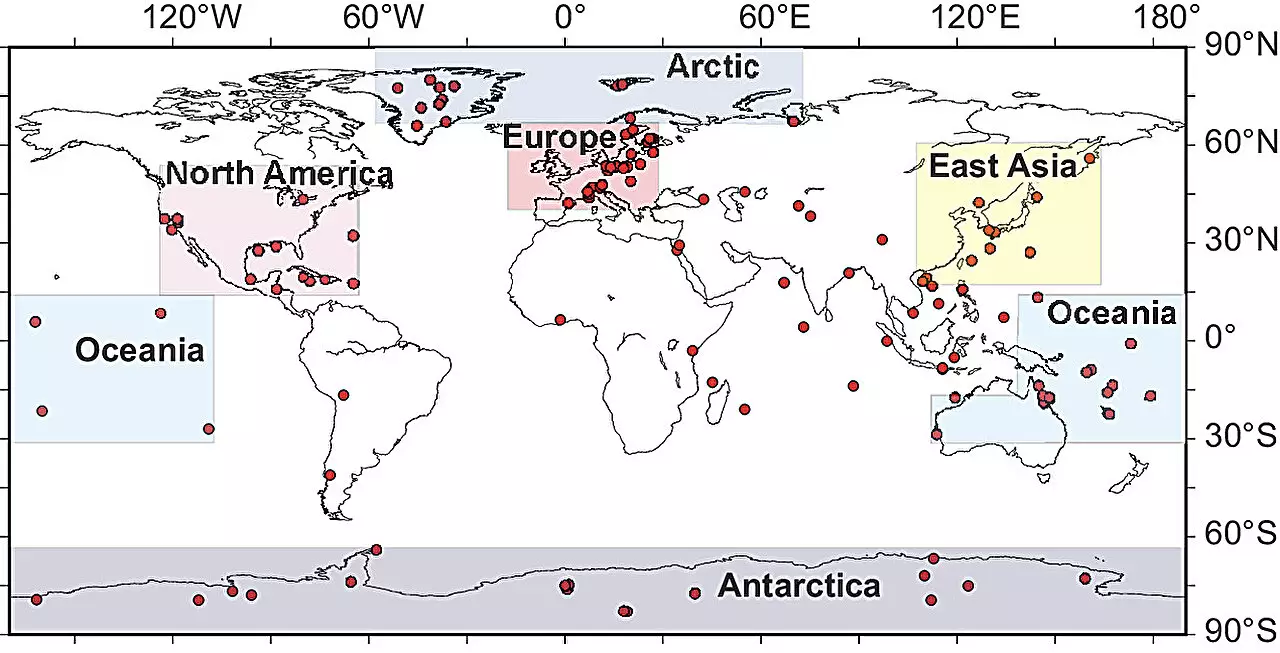The concept of the Anthropocene, a term first popularized by Nobel Laureate Paul Crutzen in 2002, refers to a new geological epoch characterized by significant human impact on Earth’s geology and ecosystems. The ongoing discourse surrounding the beginning of this era has been marked by varying opinions from scientists specializing in planetary studies. Recently, a collaborative study among a team of Earth scientists from prestigious institutions, including the University of Tokyo and The Australian National University, proposed the 1950s as the most plausible starting point for the Anthropocene. Their findings, detailed in the *Proceedings of the National Academy of Sciences*, represent a crucial chapter in understanding the human footprint on Earth.
In their research, the scientists evaluated three pivotal historical milestones that could possibly signify the commencement of the Anthropocene. The first contender, the late 1800s, marked the rise of the Industrial Revolution, a period intrinsically linked to the surge in industrial emissions and widespread environmental degradation. During this time, pollutants such as lead began to permeate the global landscape, leading to noticeable changes in chemical compositions.
Next, the early 1900s emerged as another candidate, characterized by a pronounced alteration in global pollen patterns and an increase in black carbon levels. This epoch showcased the extensive changes in the environment largely due to early 20th-century industrialization, further complicating the baseline of post-Human Holocene ecological conditions.
However, the team settled on the mid-20th century as the most compelling starting point for the Anthropocene. The 1950s were pivotal; not only did they witness the onset of global plastic pollution and widespread organic pollutants, but they also marked the dawn of the nuclear age. This era is laden with significant markers that depict irreversible changes in our planet’s geology and atmosphere.
What sets the mid-20th century apart from its predecessors is the scale and permanence of the changes registered worldwide. By scrutinizing archives and data relating to biodiversity, climate change, and pollution, the researchers were able to illustrate a clear trajectory of human influence on the planet. Notably, they highlighted how nuclear test explosions left isotopic traces that permeate the upper layers of the Earth’s strata, establishing a geologic signature that is unmistakably human in origin.
These alterations extend beyond physical pollutants. They include substantial shifts in climate patterns that triggered events like global warming. The research team underscored that these anthropogenic changes are so profound that they would likely take literal ages to revert to Holocene-like conditions, should humanity cease to influence the Earth.
The assertion that the 1950s could be marked as the true commencement of the Anthropocene has profound implications. It not only offers a geological marker of human impact but also serves as a urgent reminder of the responsibilities we carry as stewards of the planet. Understanding that significant shifts have occurred in just a few decades compels us to evaluate our environmental practices critically.
Moreover, this delineation of a new epoch heightens awareness of the urgency behind climate action. Viewing the Anthropocene as an established era affects policy-making and could galvanize global movements focused on sustainability and ecological restoration.
The investigation into the starting point of the Anthropocene is more than merely a scholarly exercise; it reflects the ongoing quest to comprehend our place within Earth’s narrative. The evidence propelling the argument towards the mid-20th century serves as a catalyst for larger discussions regarding accountability and the future of humankind’s relationship with nature. As we stand at this crucial juncture in geological history, it prompts us to consider not just when the Anthropocene began, but what legacy we wish to leave for future generations. Acknowledging our impact propels us not only to reflect on our past but also to actively shape an environmentally responsible future.

